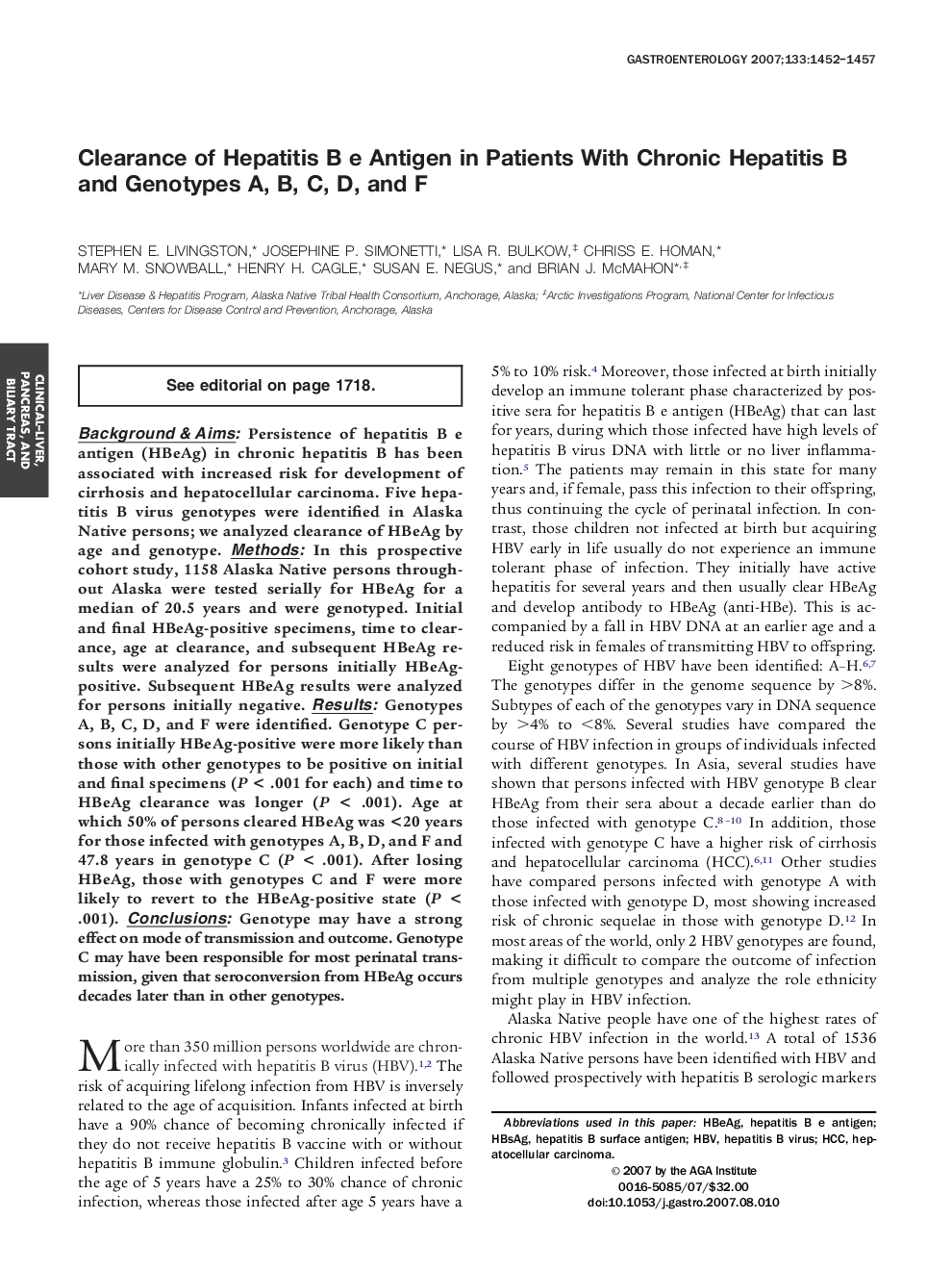| Article ID | Journal | Published Year | Pages | File Type |
|---|---|---|---|---|
| 3295996 | Gastroenterology | 2007 | 6 Pages |
Background & Aims: Persistence of hepatitis B e antigen (HBeAg) in chronic hepatitis B has been associated with increased risk for development of cirrhosis and hepatocellular carcinoma. Five hepatitis B virus genotypes were identified in Alaska Native persons; we analyzed clearance of HBeAg by age and genotype. Methods: In this prospective cohort study, 1158 Alaska Native persons throughout Alaska were tested serially for HBeAg for a median of 20.5 years and were genotyped. Initial and final HBeAg-positive specimens, time to clearance, age at clearance, and subsequent HBeAg results were analyzed for persons initially HBeAg-positive. Subsequent HBeAg results were analyzed for persons initially negative. Results: Genotypes A, B, C, D, and F were identified. Genotype C persons initially HBeAg-positive were more likely than those with other genotypes to be positive on initial and final specimens (P < .001 for each) and time to HBeAg clearance was longer (P < .001). Age at which 50% of persons cleared HBeAg was <20 years for those infected with genotypes A, B, D, and F and 47.8 years in genotype C (P < .001). After losing HBeAg, those with genotypes C and F were more likely to revert to the HBeAg-positive state (P < .001). Conclusions: Genotype may have a strong effect on mode of transmission and outcome. Genotype C may have been responsible for most perinatal transmission, given that seroconversion from HBeAg occurs decades later than in other genotypes.
